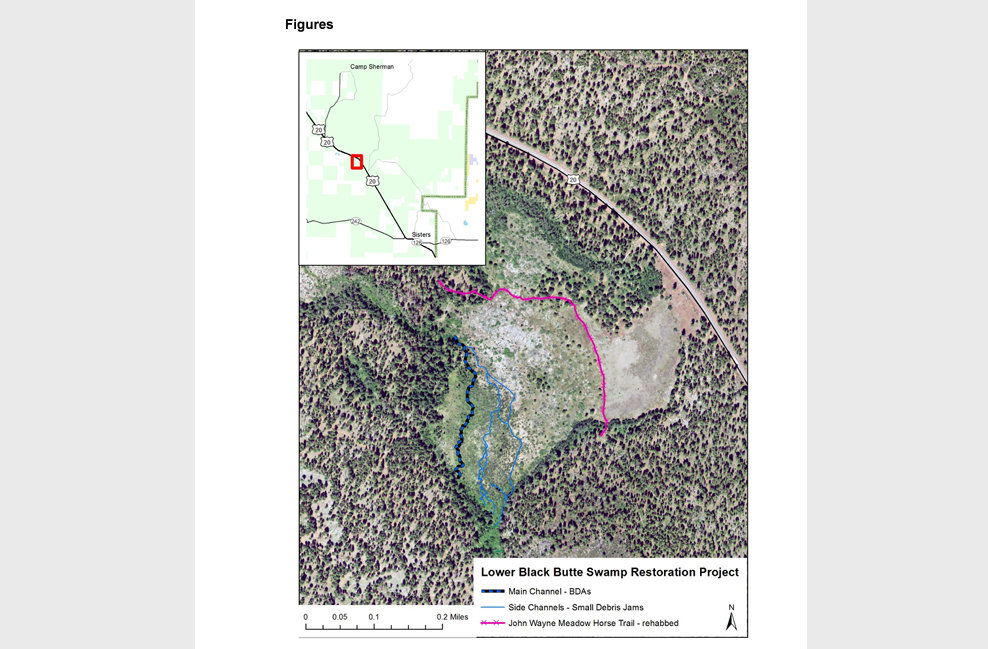Sisters Ranger District plans simulated beaver dams to restore Lower Black Butte Swamp

Forest Service lists several benefits of project
SISTERS, Ore. (KTVZ) – The Sisters Ranger District of the Deschutes National Forest announced Friday it will begin a restoration project this summer on the Lower Black Butte Swamp, a 50-acre wetland northwest of Sisters that’s been drying up for decades, by constructing beaver dam “analogs” to simulate natural beaver ponds.
Public comments are being sought by May 5 on the project to restore the swamp, which is the headwaters for Indian Ford Creek. While the work is set to begin this summer, maintenance may be needed over the next several years to keep the structures functioning, said wildlife biologist John DeLuca.
According to the decision document, the swamp transformed over the past century from a wetland with water at or near the surface in most areas to an almost entirely dry area, with only a channel of water running near its western perimeter. The trying has resulted in dead peatlands, willows and bog birch.
The project will build beaver dam analogs (BDAs) and other post-aided log structures to simulate natural beaver ponds, pounding posts 2-3 inches in damager about every 2-3 feet across the main channel.
The simulated beaver dams are an increasingly popular technique to restore damaged streams.
After that, vegetation such as willow stems and juniper branches will be woven through the posts, and soil from the banks and bed will be incorporated to help hold the dam together. Younger black-bark trees less than 16 inches in diameter in the area will be “incidentally felled” to provide material for the structures.
The BDAs would raise the water table, the document says, and distribute water to the lower part of the valley to the east. A horse trail in the valley would no longer be usable, once the water returns, but smaller debris jams may be added to rehabilitate the trail and keep it from turning into a stream channel.
Maintenance work may be done in future years “until beavers return to the project area,” such as maintaining the BDAs’ structure integrity and/or rebuilding failed structures or adding additional ones.
“Restoring (the swamp) would provide many benefits,” the Forest Service says, including to halt the loss of non-renewable peatlands, thousands of years old, while also saturating some areas with invasive noxious weeks, helping eradicate them. It also would restore habitat for sensitive species of wetland plants and wildlife, while improving water sources for game species.
